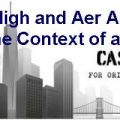 Why is it needed for the key thread to attend till the worker thread completes it function and why must it wait 100 milliseconds?
Why is it needed for the key thread to attend till the worker thread completes it function and why must it wait 100 milliseconds?If the 2nd argument is optimistic or destructive zero, then The end result is 1.0. If the second argument is one.0, then the result is similar to the main argument. If the second argument is NaN, then The end result is NaN. If the very first argument is NaN and the 2nd argument is nonzero, then the result is NaN. If absolutely the worth of the very first argument is greater than one and the 2nd argument is favourable infinity, or the absolute worth of the initial argument is below one and the 2nd argument is damaging infinity, then the result is favourable infinity. If absolutely the price of the very first argument is bigger than 1 and the next argument is adverse infinity, or the absolute worth of the 1st argument is below 1 and the 2nd argument is constructive infinity, then the result is optimistic zero. If the absolute value of the initial argument equals 1 and the 2nd argument is infinite, then The end result is NaN. If the very first argument is good zero and the 2nd argument is larger than zero, or the 1st argument is positive infinity and the next argument is under zero, then the result is optimistic zero. If the main argument is good zero and the second argument is below zero, or the primary argument is beneficial infinity and the 2nd argument is greater than zero, then the result is positive infinity. If the first argument is unfavorable zero and the 2nd argument is larger than zero although not a finite odd integer, or the initial argument is damaging infinity and the 2nd argument is fewer than zero but not a finite odd integer, then The end result is positive zero.
If you prefer to to alter the platform that NetBeans uses to the project, select Instruments > Platforms and specify a distinct System.
ceil(double a) Returns the smallest (closest to destructive infinity) double price that is greater than or equal into the argument which is equal to your mathematical integer.
In free-kind projects, the IDE is not aware of any of these things. When you operate a command while in the IDE (such as Build), the IDE merely calls a focus on in the Construct script and allows the script tackle the command.
If both benefit is NaN, then The end result is NaN. In contrast to the numerical comparison operators, this technique considers damaging zero being strictly scaled-down than beneficial zero. If just one argument is optimistic zero and one other is detrimental zero, the result is unfavorable zero.
If the first argument is damaging zero and the 2nd argument is a constructive finite odd integer, or the very first argument is negative infinity and the 2nd argument is a damaging finite odd integer, then The end result is negative zero. If the very first argument is adverse zero and the second argument linked here is under zero but not a finite odd integer, or the first argument is destructive infinity and the second argument is greater than zero although not a finite odd integer, then The end result is beneficial infinity. If the 1st argument is adverse zero and the second argument is usually a destructive finite odd integer, or the very first argument is negative infinity and the 2nd argument can be a favourable finite odd integer, then The end result is detrimental infinity. If the first argument is finite and lower than zero if the next argument is actually a finite even integer, the result is equivalent to the result of increasing the absolute worth of the primary argument to the strength of the next argument if the next argument is a finite odd integer, The end result is equal to your detrimental of the results of raising absolutely the value of the main argument to the strength of the next argument if the next argument is finite and not an integer, then the result is NaN. If each arguments are integers, then the result is strictly equivalent into the mathematical result of raising the 1st argument to the power of the next argument if that final result can actually be represented specifically as a double benefit.
When pleased with your software, you may want to bundle it in a Java archive (JAR) for distribution. To try this, you must make an artifact configuration for your personal JAR after which build the artifact.
Normally, The end result is definitely the double benefit closest to your true mathematical square root of your argument worth.
Library. A group of JAR information or folders with compiled lessons, which could optionally have linked supply data files and Javadoc documentation.
It is possible to increase several sources roots to either common or cost-free-type projects that demand them. Even so, never ever incorporate a similar source root to multiple project since this is simply not supported while in the IDE.
Due to the fact our software will likely be a "simple aged Java application", we don't need her explanation any more technologies to be supported. So, Will not pick out any of the choices beneath Supplemental Libraries and Frameworks.
Take note the package deal statement at first on the file and in addition The category declaration. When developing The category, IntelliJ Strategy applied a file template for any Java course.
"An additional fantastic session, my dilemma was incredibly complected and was solved with him in these a short time with a great explanation, simply Raditha is the best"